Life
The son of Peter Patmore, a dealer in plate and jewellery, he was born in his father's house on Ludgate Hill, London. Patmore refused to go into his father's business, and became a man of letters, the friend of William Hazlitt and Charles Lamb, journalist and writer. [1]
Patmore was Assistant Secretary of the Surrey Institution, where Hazlitt lectured in 1818, after which the two became personal friends. Patmore was thereby enabled to record many details about Hazlitt later drawn upon by the latter's biographers.
In 1821 the journalist John Scott was involved in a duel over a literary quarrel, in which he was fatally shot. Patmore was his second; and was put on trial for murder with the principal Jonathan Henry Christie, agent for John Gibson Lockhart in London, and the second on the other side. Although Patmore was acquitted, he was a pariah in the eyes of some. [2] [3]
Patmore died near Hampstead on 19 December 1855, aged 69. [1]
Works
He was best known at the New Monthly Magazine , of which he was editor from Theodore Hook's death in 1841 until the periodical was acquired by William Harrison Ainsworth in 1853. Patmore was also a contributor to other periodicals: the Liberal Review , the Westminster Review , the Retrospective Review , and to Blackwood's Magazine , the London Magazine and the Monthly Magazine . Several of Lamb's most characteristic letters were addressed to him, as were also the epistles subsequently collected by Hazlitt under the title of the Liber Amoris. [1] Appearing in that book as "C. P.", Patmore was associated with Hazlitt's adultery with Sarah Walker, to the detriment of his reputation. [2]
Patmore's best-known works included:
- Imitations of Celebrated Authors, or Imaginary Rejected Articles, London, 1826; a fourth edition appeared in 1844, with the title slightly modified and humorous preface omitted. The authors imitated were: William Cobbett, Lord Byron, Gilbert White, Horace and James Smith, William Hazlitt, Lord Jeffrey, and Leigh Hunt.
- My Friends and Acquaintance: Being Memorials, Mind-portraits, and Personal Recollections of Deceased Celebrities of the Nineteenth Century, with Selections from Their Unpublished Letters, London, 3 vols. 1854. [1]
These gossipy volumes were filled with personal information on Lamb, Thomas Campbell, Lady Blessington, Robert Plumer Ward, H. and J. Smith, Hazlitt, Laman Blanchard, Richard Brinsley Sheridan and Thomas Sheridan, son of the playwright. The critics, especially in the Athenæum Magazine and North British Review , rebuked the author for their triviality and inconsequence. The fact that the praise so freely given to Robert Plumer Ward was withheld from Campbell raised a storm of comment in a correspondence which ran in the Athenæum. [1]
Patmore's others works (several of which were issued anonymously) included:
- Sir Thomas Laurence's Cabinet of Gems, with Biographical and Descriptive Memorials, 1837;
- Chatsworth, or the Romance of a Week, 1844;
- Marriage in Mayfair, a comedy, 1854. [1]
He also wrote The Mirror of the Months, 1826, and Finden's Gallery of Beauty, or the Court of Queen Victoria, 1844'. [1]
Between the years of 1820 and 1825, he was known mainly for a series of articles in the New Monthly Magazine entitled "Picture Galleries of England", acting as a critical guide to the main aristocratic collections of Old Master paintings at the time. These articles were a response to, and in some ways a dialogue with, a similar series begun by Hazlitt at around the same time, and published in the London Magazine. Patmore's works were serialised and then published in a single volume in 1824. He was forced into publication by the announcement of several other works of the same name attempting to capitalise on his (or possibly Hazlitt's) success.

William Hazlitt was an English essayist, drama and literary critic, painter, social commentator, and philosopher. He is now considered one of the greatest critics and essayists in the history of the English language, placed in the company of Samuel Johnson and George Orwell. He is also acknowledged as the finest art critic of his age. Despite his high standing among historians of literature and art, his work is currently little read and mostly out of print.
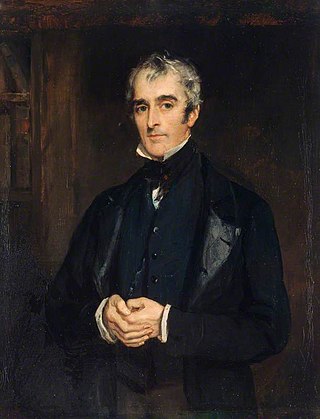
John Gibson Lockhart was a Scottish writer and editor. He is best known as the author of the seminal, and much-admired, seven-volume biography of his father-in-law Sir Walter Scott: Memoirs of the Life of Sir Walter Scott, Bart. He produced four novels in the early 1820s including Adam Blair and Reginald Dalton.

James Henry Leigh Hunt, best known as Leigh Hunt, was an English critic, essayist and poet.

Charles Lamb was an English essayist, poet, and antiquarian, best known for his Essays of Elia and for the children's book Tales from Shakespeare, co-authored with his sister, Mary Lamb (1764–1847).
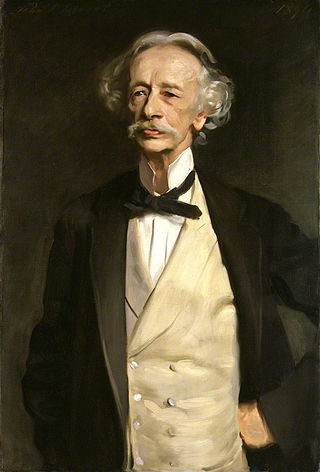
Coventry Kersey Dighton Patmore was an English poet and literary critic. He is best known for his book of poetry The Angel in the House, a narrative poem about the Victorian ideal of a happy marriage.

Sir John William Kaye was a British military historian, civil servant and army officer in India. His major works on military history include a three-volume work on The History of the Sepoy War in India. This work was revised later by George Bruce Malleson and published in six volumes in 1890 as Kaye and Malleson's History of the Indian Mutiny.
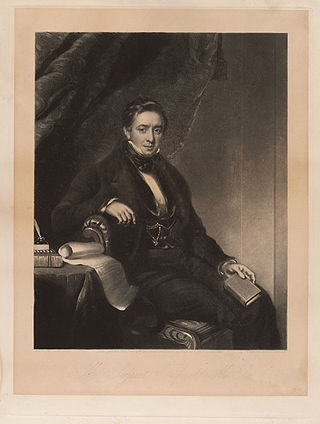
Sir Thomas Noon Talfourd SL was an English judge, Radical politician and author.

Sir Henry Taylor was an English dramatist and poet, Colonial Office official, and man of letters.

Robert Ward, or from 1828 Robert Plumer Ward, was an English barrister, politician, and novelist. George Canning said that his law books were as pleasant as novels, and his novels as dull as law books.
Henry Colburn was a British publisher.

The London Magazine is the title of six different publications that have appeared in succession since 1732. All six have focused on the arts, literature and miscellaneous topics.
The Morning Chronicle was a newspaper founded in 1769 in London. It was notable for having been the first steady employer of essayist William Hazlitt as a political reporter and the first steady employer of Charles Dickens as a journalist. It was the first newspaper to employ a salaried woman journalist Eliza Lynn Linton; for publishing the articles by Henry Mayhew that were collected and published in book format in 1851 as London Labour and the London Poor; and for publishing other major writers, such as John Stuart Mill.
John Scott was a Scottish journalist, editor and publisher.

The Surrey Institution was an organisation devoted to scientific, literary and musical education and research, based in London. It was founded by private subscription in 1807, taking the Royal Institution, founded in 1799, as a model. The Institution lasted only until 1823, when it was dissolved.
The New Monthly Magazine was a British monthly magazine published from 1814 to 1884. It was founded by Henry Colburn and published by him through to 1845.

William Mudford was a British writer, essayist, translator of literary works and journalist. He also wrote critical and philosophical essays and reviews. His 1829 novel The Five Nights of St. Albans: A Romance of the Sixteenth Century received a good review from John Gibson Lockhart, an achievement which was considered a rare distinction. Mudford also published short fictional stories which were featured in periodicals such as Blackwood's Edinburgh Magazine, Fraser's Magazine, and Bentley's Miscellany.
Katherine Thomson (1797–1862) was an English writer, known as a novelist and historian.

Arthur Henfrey was an English surgeon and botanist.
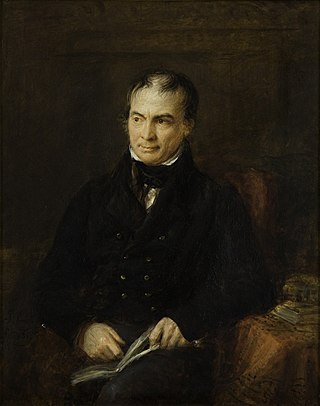
Pelham Warren (1778–1835) was an English physician.
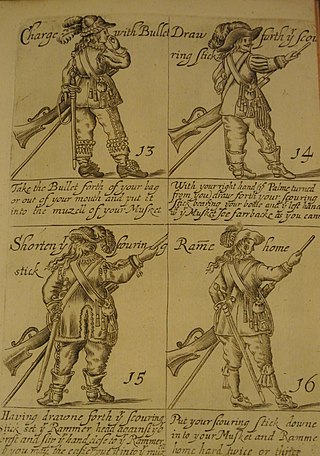
Thomas Jenner was an English author, engraver, and publisher in London. He kept from 1624 a print-shop by the south entrance of the Royal Exchange; it was recommended by John Evelyn to Samuel Pepys.
This page is based on this
Wikipedia article Text is available under the
CC BY-SA 4.0 license; additional terms may apply.
Images, videos and audio are available under their respective licenses.
![]() This article incorporates text from a publication now in the public domain : "Patmore, Peter George". Dictionary of National Biography . London: Smith, Elder & Co. 1885–1900.
This article incorporates text from a publication now in the public domain : "Patmore, Peter George". Dictionary of National Biography . London: Smith, Elder & Co. 1885–1900.












